Week 11
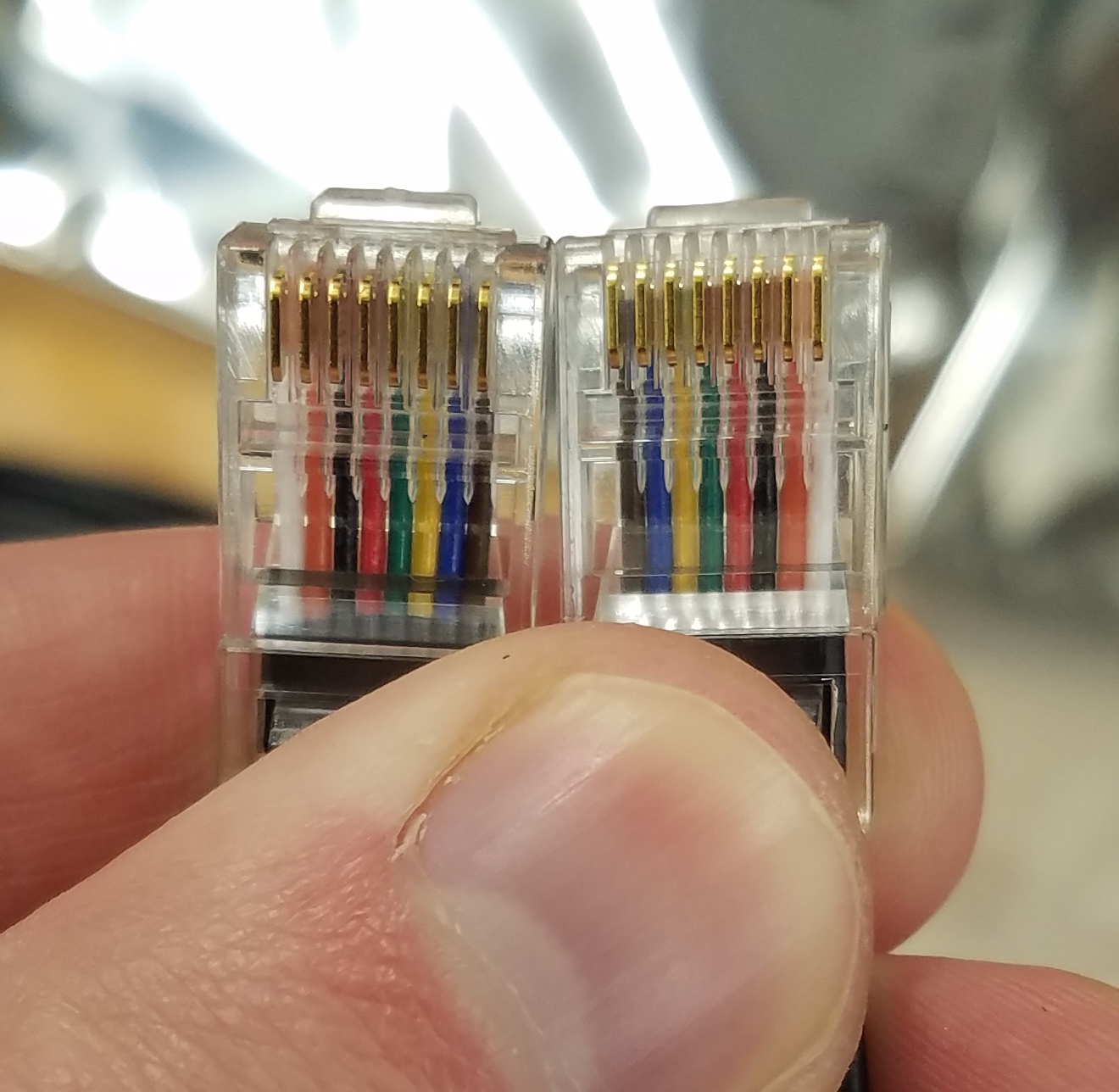
This week, I helped our group get set up with creating a machine to serve as a camera rig for time lapse videos, so that the camera taking the time lapse video can pan and rotate as it captures images.
I helped get the initial hardware set up so that we could program the machine with the RNDMC JavaScript app that Jake Read authored and shared with the class. This consisted of figuring out the wiring and power supply to the router board, a stepper board, and a breadboardboard. The boards seemed to work with as little as 5V of power, but the sweet spot seemed to be around 20V. I also worked on getting the communication between the boards and the computer, but that was less successful because as it turns out, one of our boards was faulty, which contributed to some inconsistent and weird behavior that I was seeing.
That means that my most lasting contribution to the project was this documentation of how to build our ethernet-like cables:
Use the flat cable, the ethernet-like endings and the big crimping tool
Put the flat cable through the crimper in the opening with the blades. The side labelled “cut” cuts, and “strip” strips. You want them both to be doing their thing.
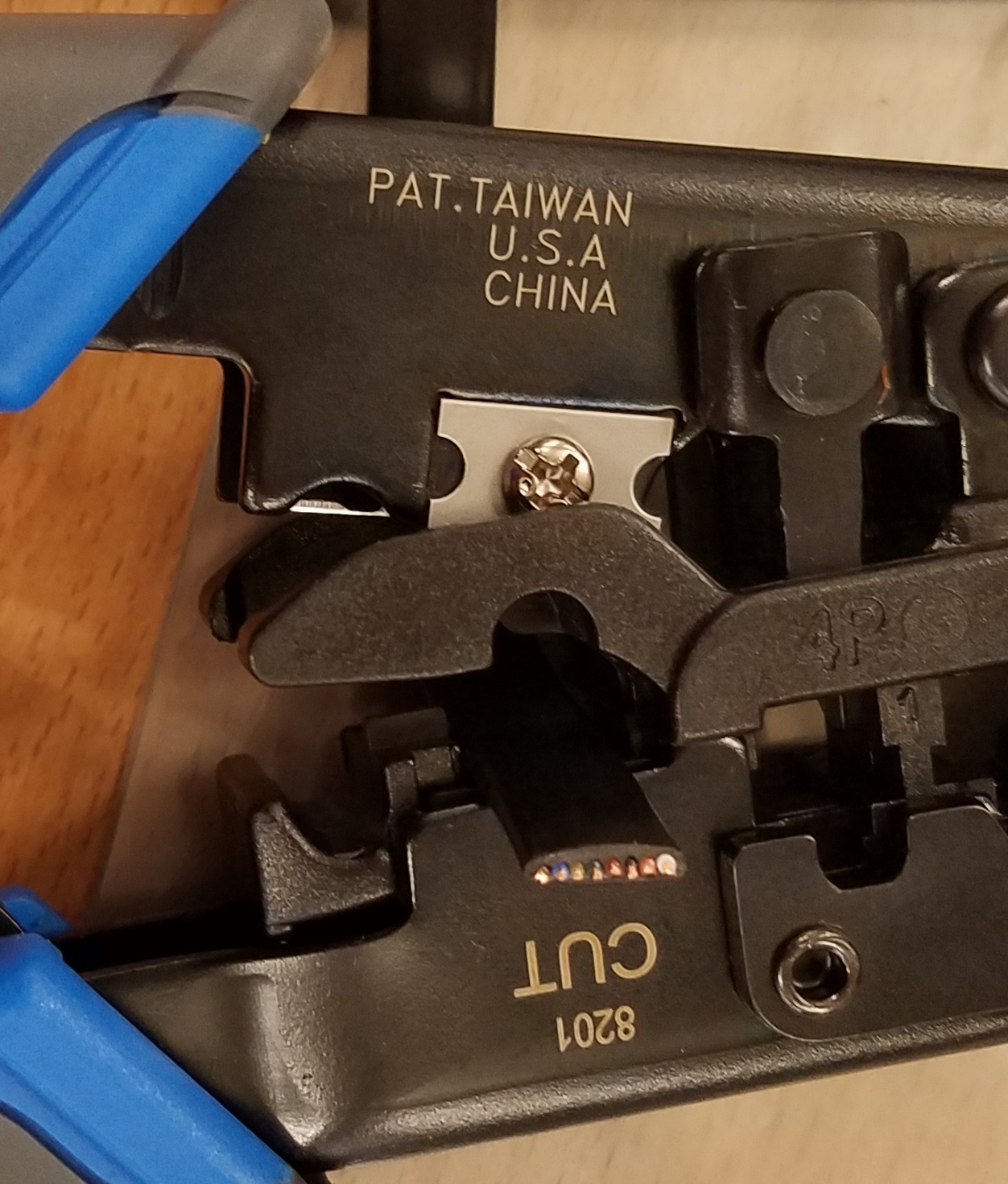
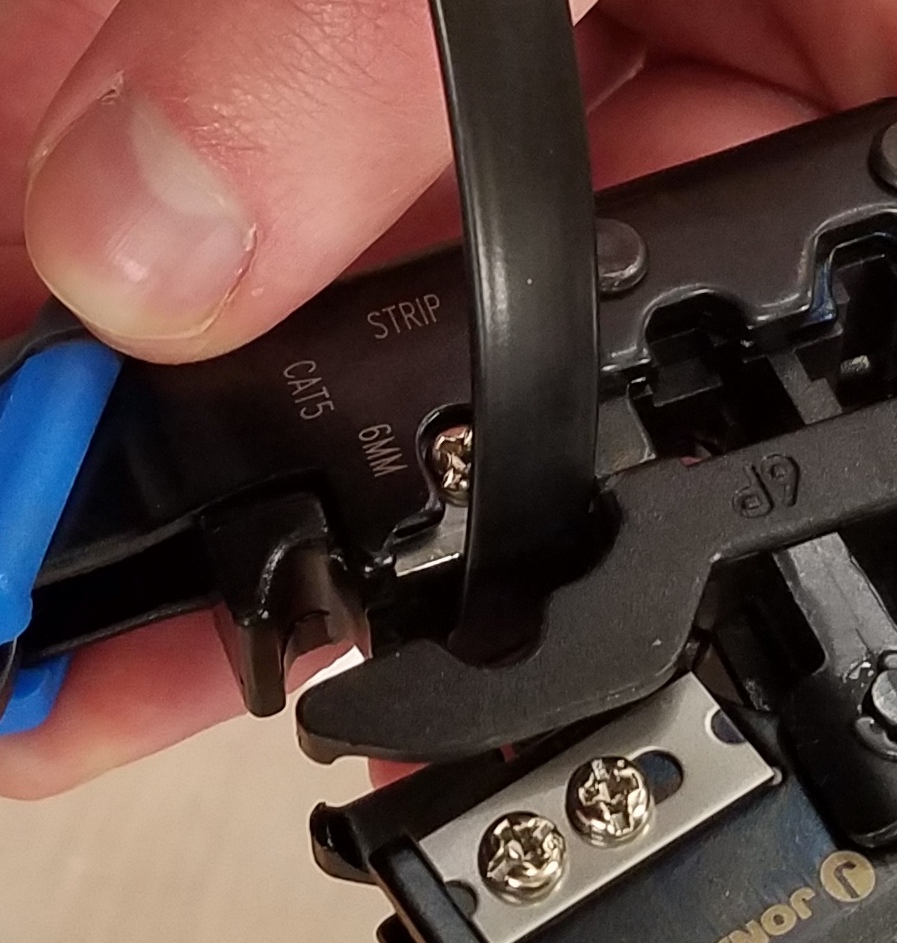
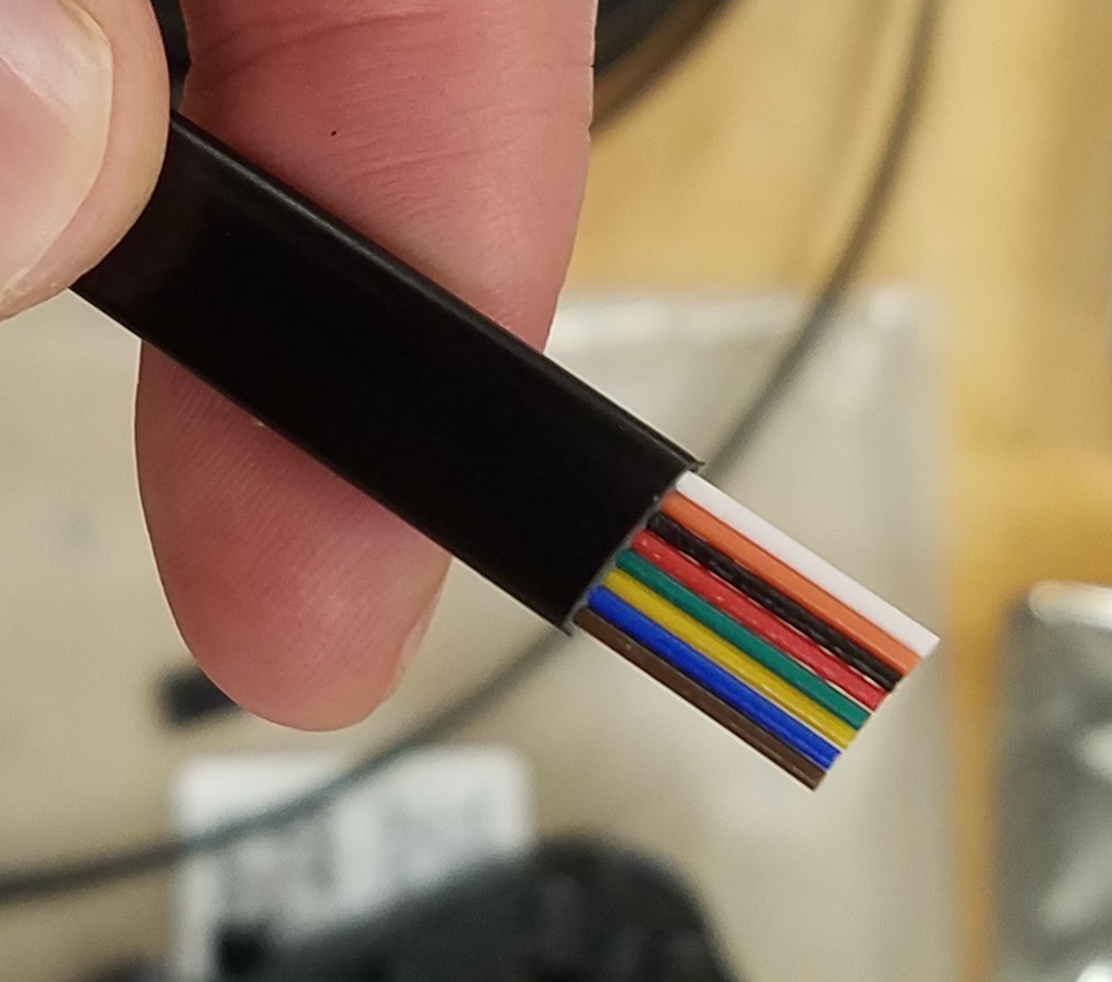
Grip the crimper closed, hold it tight, and pull the cable out from the “strip” end. It should come out with the colored wires under the black casing exposed, but not stripped.
Slide the wires into the housing for the ethernet cable. The orientation for the first one doesn’t matter, but when you hold both ends up next to each other, they should be reversed, like this:

To crimp the end, first figure out which direction to put it in. The end should go on the side that says “CUT”, where there is a comb-like thing in the crimper:
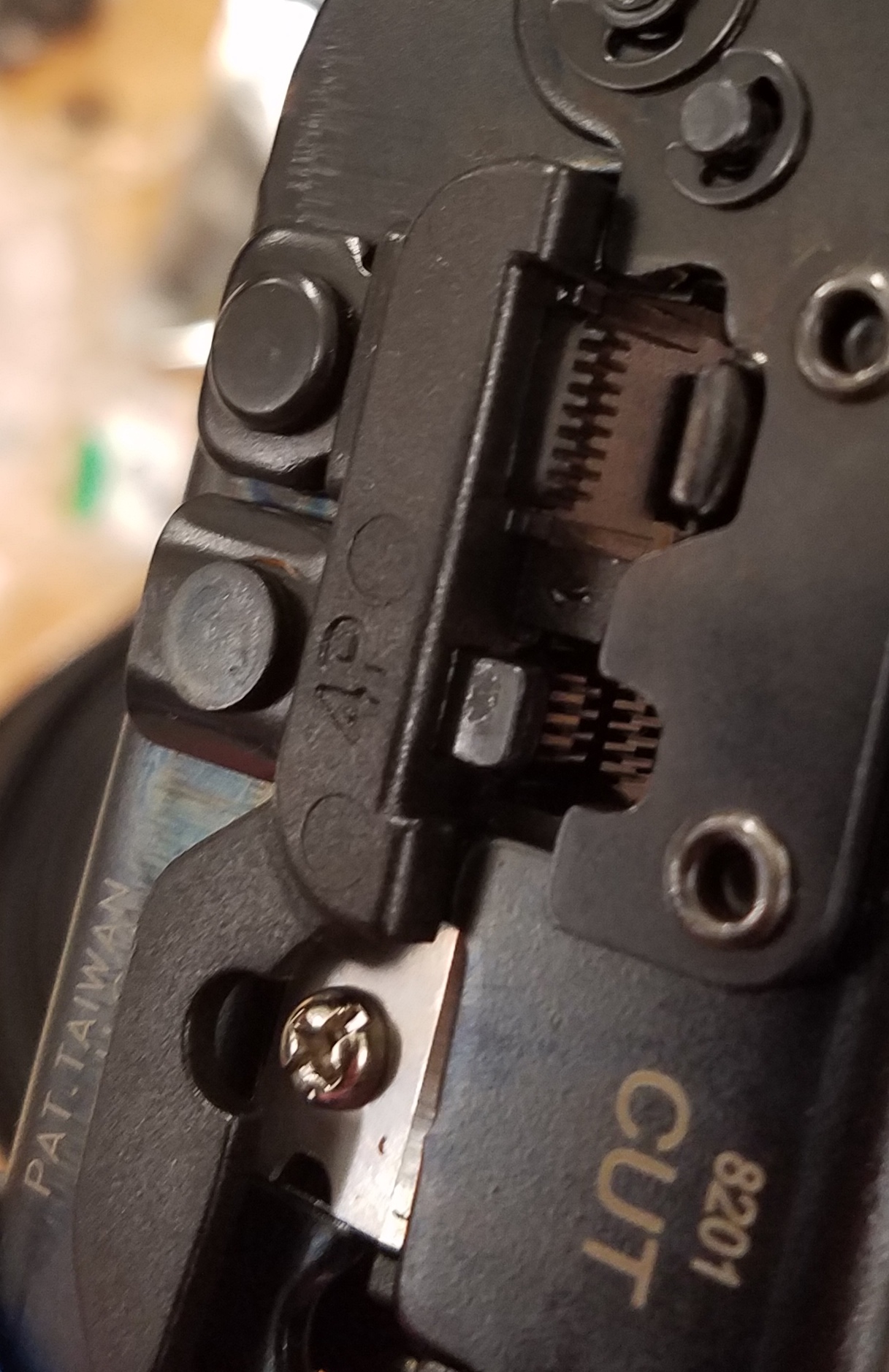
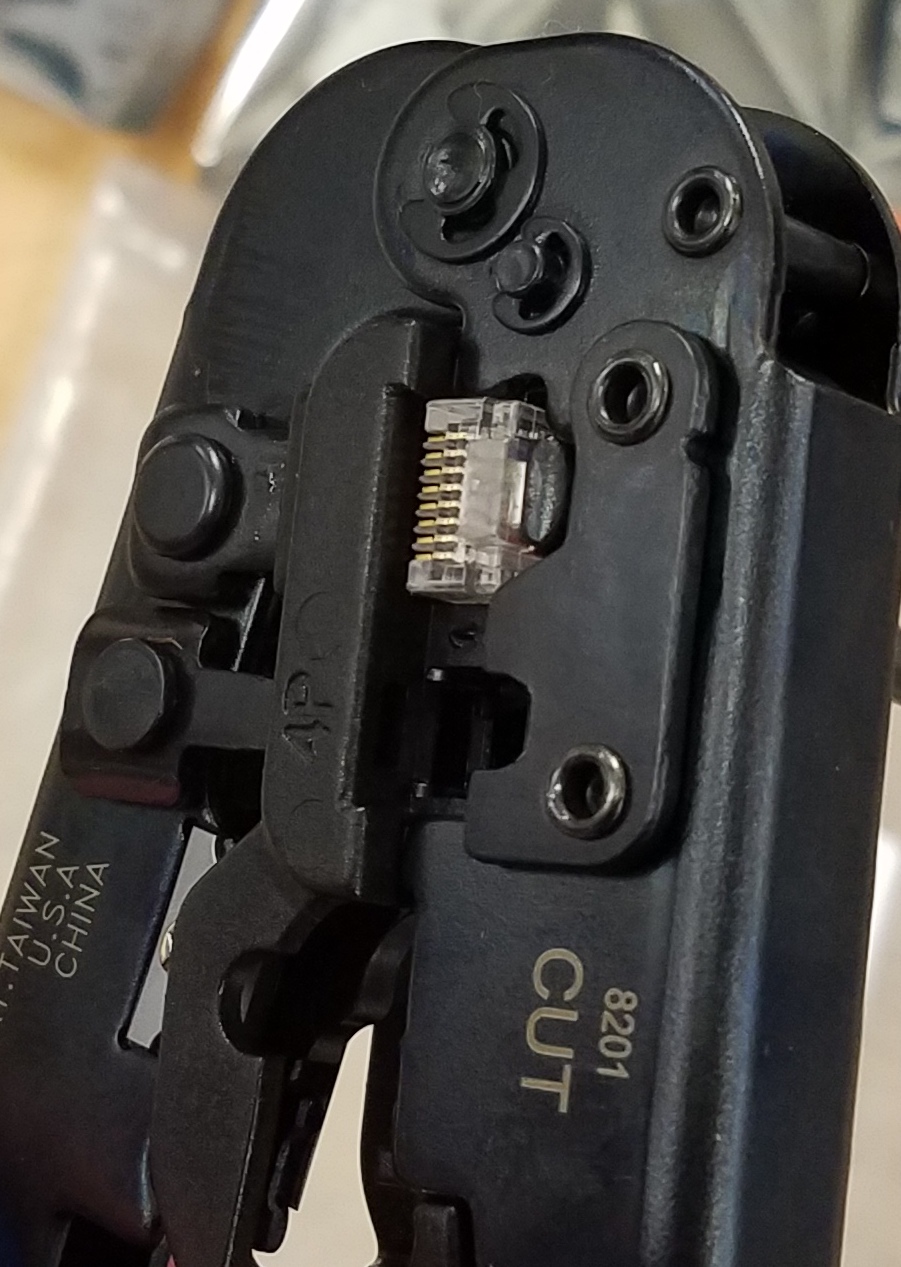
The wire end should be on the opposite side, where there is a flat piece inside the crimper:
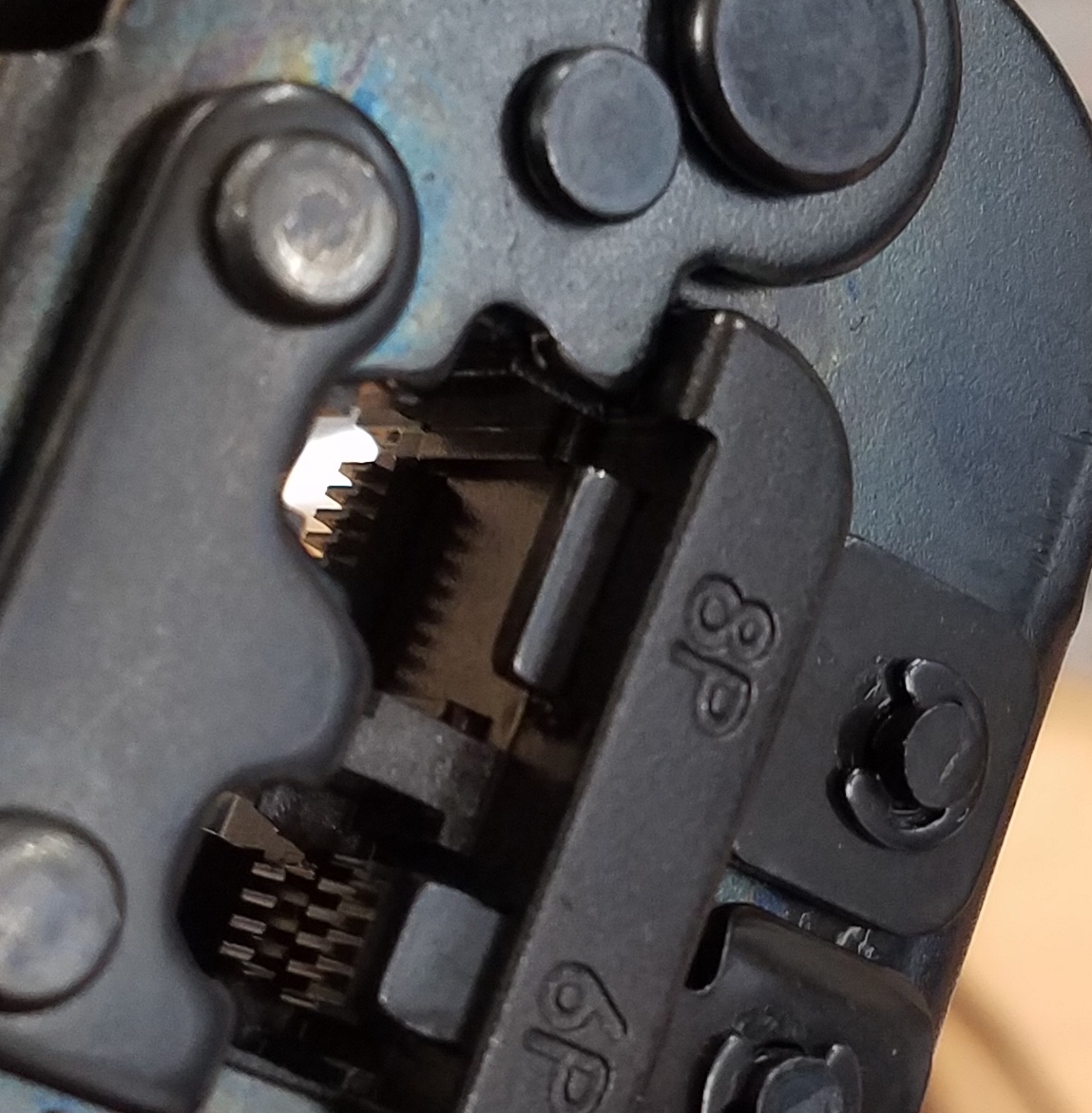
With the end in place, just close the crimper tightly and release, and the end should be connected. Repeat the process for the other end, making sure that the colors are reversed inside the housing